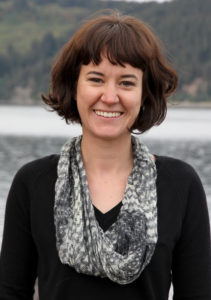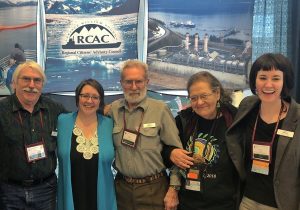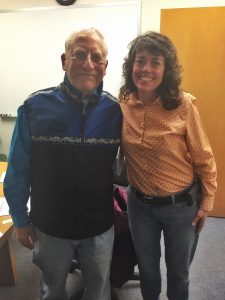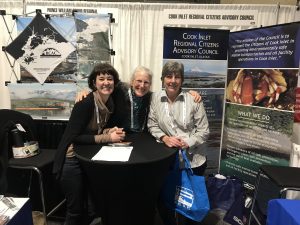Natalie Novik, administrative assistant for the Anchorage office, passed away in October 2021, after a two-year battle with cancer. Natalie joined Council staff in June 2014.
Born and educated in Paris, Natalie was proud of her Breton and Russian roots. She dedicated much of her life to oil spill prevention and response in Alaska and internationally.
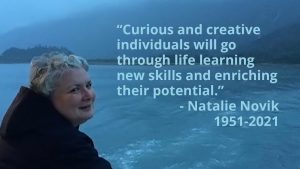
She volunteered to help clean up after multiple oil spills that plagued Brittany starting in the 1970s. When the Exxon Valdez spill occurred, Natalie was teaching in New York and already planning to move to Alaska.
In Alaska, Natalie spent 13 years with Northern Forum, a nonprofit group created to improve communications and cooperation in northern regions. In that role she supported providing ongoing know-how and assistance related to the 1994 pipeline spill in the Komi Republic in Russia. As part of Northern Forum’s program on disaster management in the North and the Arctic, Natalie was in charge of relations with the Arctic Council.
Years before joining the Council’s staff, she provided translation and interpretation between the Council and Sydicat Mixte Vigipol, a citizen governance group created after the Amoco Cadiz ran aground in 1978 on the Brittany coast. Natalie also worked two years for Ecoshelf on Sakhalin Island in Russia, translating contracts and documents related to oil spill prevention, monitoring, and response.
Natalie was an advocate for residents of northern regions and cross-cultural engagement in many ways. She worked for the Alaska Native Science Commission’s community self-reliance project from 2012-2013, and the World Trade Centers Association immediately before joining the Council’s staff. From 2009-2014, she served as Honorary Consul of France in Alaska. She was a devoted volunteer for the Celtic Community of Alaska, where she was still serving as president until she passed.
Natalie was very proud of her work with the Council and was a true believer in our mission. She provided vast contributions to the Council’s robust archives, directly supporting the success of many projects that rely on historical knowledge. She firmly believed in the value of gathering and connecting in person, and poured attention into every detail for the annual Science Night event, volunteer workshop, and holiday party.
Natalie left behind her beloved cat Sashka (who has been adopted by a friend), many friends and colleagues, and memories of her sense of humor, caring, creativity, and passion. When Natalie applied for her position at the Council, she summed up her career thusly: “curious and creative individuals will go through life learning new skills and enriching their potential.”
